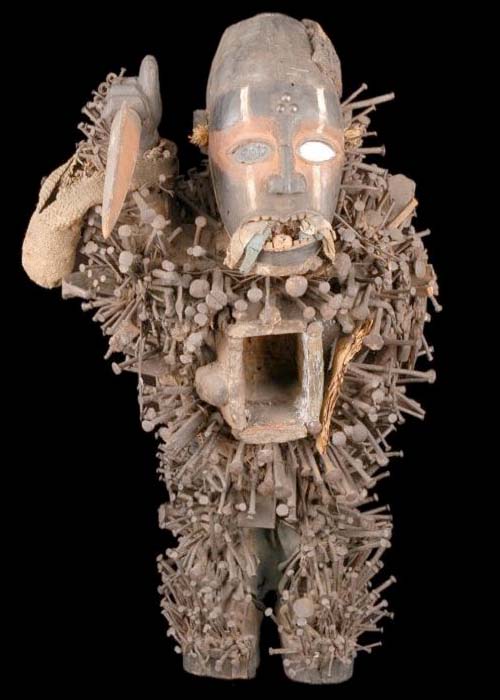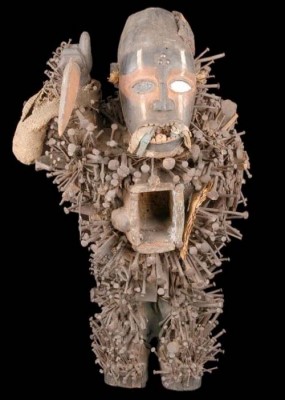FakePress will be at the Future of Education Conference in Florence on June 16th and 17th, presenting a research paper titled:
“Training Future Anthropologists by Innovative Means: Professional Vision from Augmented Reality NKISI Representations”
Here is a link to download the PDF of the abstract.
Here is the Future of Education Conference website
The paper deals with a research that we’ve been performing for a while with FakePress. This specific instance of the research is done by Salvatore Iaconesi, Luca Simeone and Federico Monaco, and it is perfectly integrated with the other researches FakePress is performing to analyze interesting scenarios in which augmented reality techniques and technologies can be used to promote new forms and practices for education.
In this project a NKISI statue from Congo is connected to a computer vision system which allows recognizing its features in realtime. Each feature can be then connected to digital information through a specifically taylored Content Management System.
The result is that the statue can be connected with information that is accessible directly from the statue itself, for example by moving it in front of a camera that feeds its image to the computer vision system and then shows the fetched information on screen.
This is an incredibly stimulating area for research which has applications in multiple fields, allowing us to populate objects and places with easily accessible digital information, thus potentially enacting entirely new forms of publication, education and expression.
Here is the abstract:
“Augmented reality learning tools can give significant contributions to the development of anthropological practices. The steps to acquire a professional vision in a specific research field can be supported and enhanced by ITC applications creating content for students and practitioners. Digital tools can be created and supported by versatile cross-medial Content Management Systems, allowing for the creation of networked and collaborative knowledge ecosystems that can extend the reach of digital communication onto physical artifacts, geographic locations, architectures and even bodies. Here users/researchers/students are able to stratify layers of information in ways that are directly accessible from the physical objects/places/spaces of research/study, and that allow achieving a state of continuous correlation of data, information and points of view that is extremely effective and usable: users can behave as publishers of their own impressions and experiences, or as designers building their own tools needed for their fields of activities. Innovation in education seems possible even in Humanities and specifically in fields such as ethnography research, where the practices of scientific enquiring and methodology depend strongly on how they are reproduced and transmitted. The adoption of augmented reality learning tools can be helpful for education in Cultural Anthropology and opens itself new transdisciplinary horizons of research for Information Science and Anthropology.
In this case study, NKISI, power figures from Congo, are used to create a materialized learning and knowledge sharing environment, implemented using advanced augmented reality techniques. The design encloses the choice of objects, their encoding as learning facilities, the representation of possible usage scenarios of the platform, and the definition of the scope of the AR experiences, from the point of view of the acquisition of professional skills.
The case study covers an end to end process in which the description of cultural processes and insights is used from the beginning as a basic tool both in the specific case (describing the salient characteristics of the NKISI) and as a methodological scenario that allows apprentices and students to describe and to add their experiences of the cultural meaning of these ethnic representations. Learning by doing seems not always possible and the access to virtual representation of foreign cultures can be a good compromise between a static picture on a book and the learning experience with a real ethnical artifact. Only through a testing activity in a real learning environment a new tool can be shaped according to users’ needs and can be compared to how professional vision is gained by training and experience in other ways and by other educational means”
![[ AOS ] Art is Open Source](https://www.artisopensource.net/network/artisopensource/wp-content/uploads/2020/03/AOSLogo-01.png)

